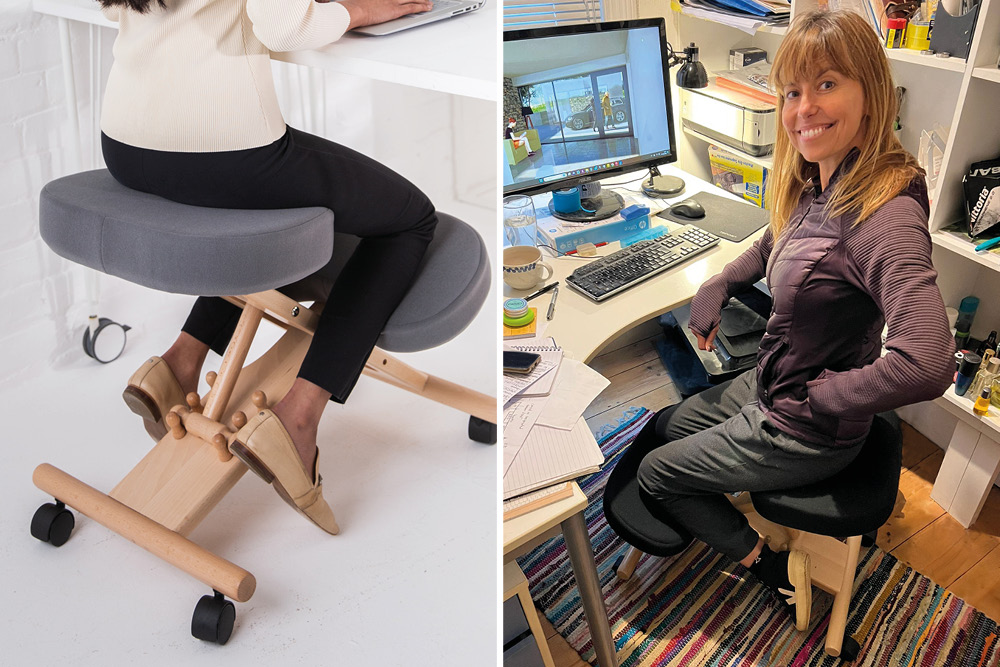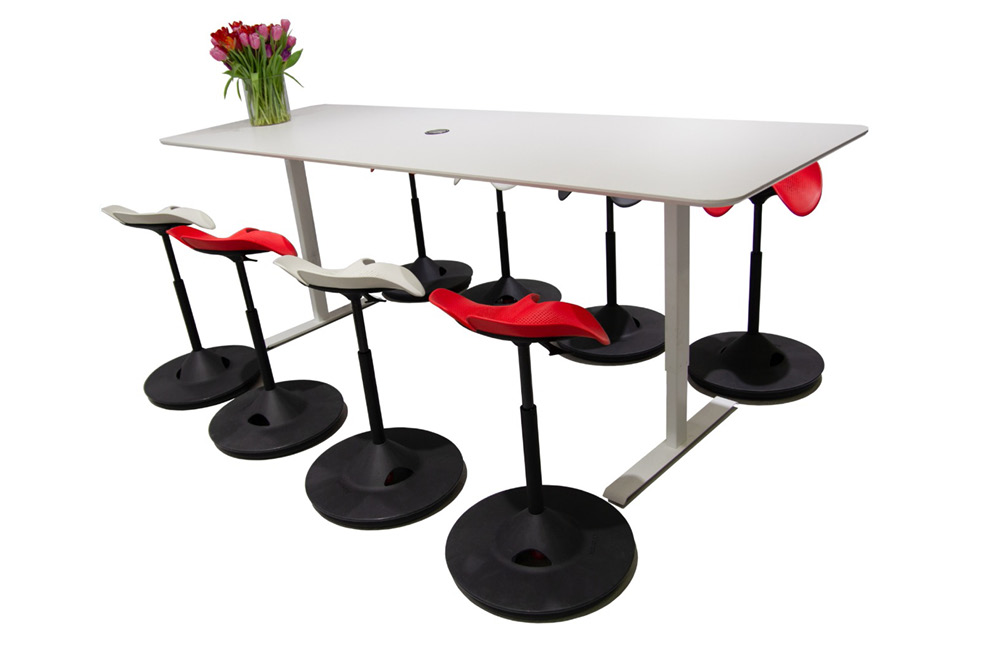
Sit still and slumped on a bad chair for eight hours every day, five days a week, 12 months a year and you might find yourself with musculoskeletal issues. These could be bad enough to impact all areas of your life, from your personal relationships to your performance at work.
This is why it's so important to choose your office equipment carefully, with expert opinion. And, just as with more conventional seating, it’s vital to distinguish the great kneeling chair designs from poor or unsuitable versions.
Posturite have included well-designed kneeling chairs in our extensive collection of chairs for decades, and our selected kneeling chairs have often been the perfect choice, for office work and home activities around a table. I’ll take you through the potential benefits of using a kneeling chair below.
Kneeling chairs - what are they anyway?
Kneeling chairs first became a popular alternative to office chairs based on Peter Opsvik’s designs in the ‘70s. They present a different way of sitting, aiming to ease those day-to-day aches and pains experienced by so many office workers around the world.
The idea behind the design is that one seat is angled forwards to balance the pelvis, and thus the spine, in a poised natural position with an open hip angle. The knee pads on good kneeling chairs are not used all the time, because the legs adopt various positions, but the shin pads can prevent the body slipping forwards. This ‘kneeling’ position encourages your postural muscles to better align your back, shoulders and neck. Kneeling chairs that have a rocking seat stimulate variety and are best for longer usage.
Are kneeling chairs a good choice?
We are all different and carry out a variety of tasks at differing workstations, so there will never be one perfect chair for all.
Ella Tyler, pictured above, works from home as COO at Lead5050 and loves hers. “My kneeling chair provides excellent support and relieves pressure on my lower back. And yes, I now feel like I have better posture at my desk.”
One thing health professionals agree on is that moving regularly is good for you. Many thousands of users will attest that switching to a rocking, swivelling kneeling chair is a fantastic way to encourage more movement. Here’s why:
- It breaks you out of static positions that slow your body down and relieves pressure on your body.
- It prevents you sitting still for long periods. Sitting still slows the metabolism, which reduces the body’s ability to regulate blood sugar and break down body fat.

Introducing a rocking kneeling chair as a seating option in the office is a good way to encourage more movement. Rocking kneeling chairs are designed to promote ‘active sitting’ and in many situations this encourages more core activity.
Rocking kneeling chairs can be used all day by most people after acclimatisation. Static kneeling chairs, on the other hand, don’t provide stimulation and are best chosen for very short-term tasks.
Rocking kneeling chairs are ideal for computer work, and other activities that could otherwise keep you static, but also for work that involves leaning forwards such as handwriting or drawing. For these you could also add a desk slope.
As with all chairs, it’s vital that your kneeling chair works well with your other working furniture and equipment, to achieve a good set up and encourage movement. A good rocking kneeling chair is made to last and it has adjustments to fit different builds and different height surfaces, plus swivel and wheels for mobility. It provides the vital adjustment and movement options to keep you active throughout the day - with regular breaks of course.
What is the proper way to use a kneeling chair?
A kneeling chair can feel immediately wonderful, or a little strange at first. For many people, as for any new activity, a gradual strengthening of muscles is often the best way. You may find that keeping your existing office chair nearby and alternating between the two will help in the transition. A rocking kneeling chair improves your core muscles gradually over days and weeks - but if you’ve been sitting poorly or just in a different position, your body will need to adapt.
When using a kneeling chair, your bottom should be carrying the bulk of your weight. The lower pad is there to act as a support for your shins to stop you feeling as if you are sliding forwards. Begin by sitting on the seat, before resting your knees gently (or slightly above) the pads, in the kneeling position. As with all working positions, it's important to vary your position frequently during the day and some of this movement will be provided by the rock and swivel. A good tip is also to vary which leg is put forwards.
What other chairs could be considered for active sitting, as well as kneeling chairs?
Active sitting comes in many forms, and there are office chairs that can achieve this very effectively, such as the HÅG Capisco which incorporates built-in balance mechanisms to move with your body. These stimulate your blood flow, keep your muscles engaged and prevent you from sitting in a static posture for too long. The Capisco chair can be used to support different postures, making it ideal for hot-deskers, designers, illustrators, artists and crafters. HÅG Capisco chairs from Posturite are supportive and versatile enough to be used all day long - with breaks and movement of course!
Also consider the unusual Backapp Hipp office stool for active sitting. The clever Norwegian design of the Backapp Hipp helps to strengthen your back and ensures a natural sitting posture leading to less fatigue. It aims to keep you comfortable, alert and productive at your desk. It works by constantly stimulating the muscles that you use to balance as the stool gently moves on its central axis.
Questions? Posturite offer expert help and advice with choosing the right active sitting chair for you – just start an Online Chat with their Product Specialists by clicking the green speech bubble.















